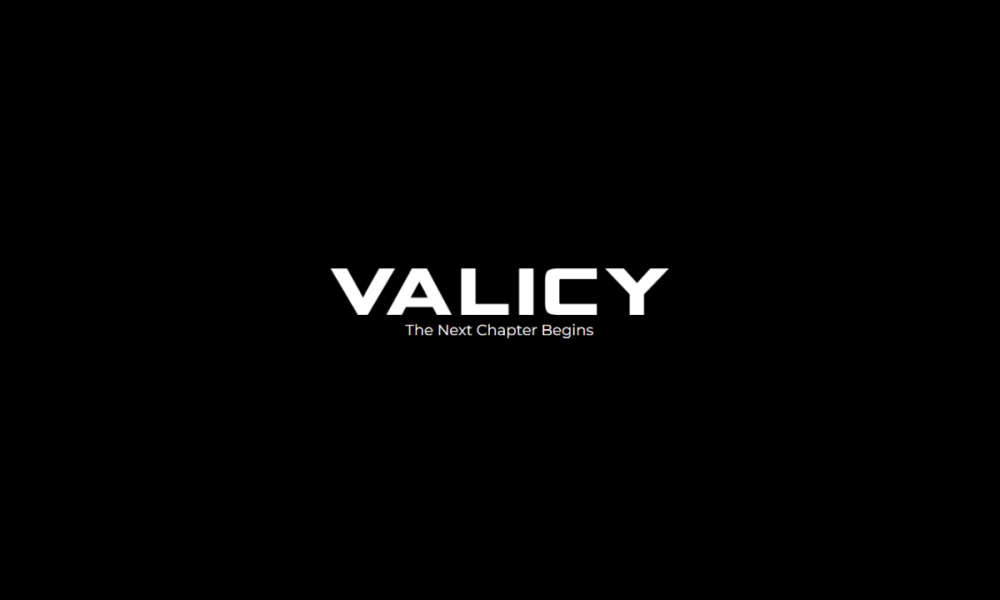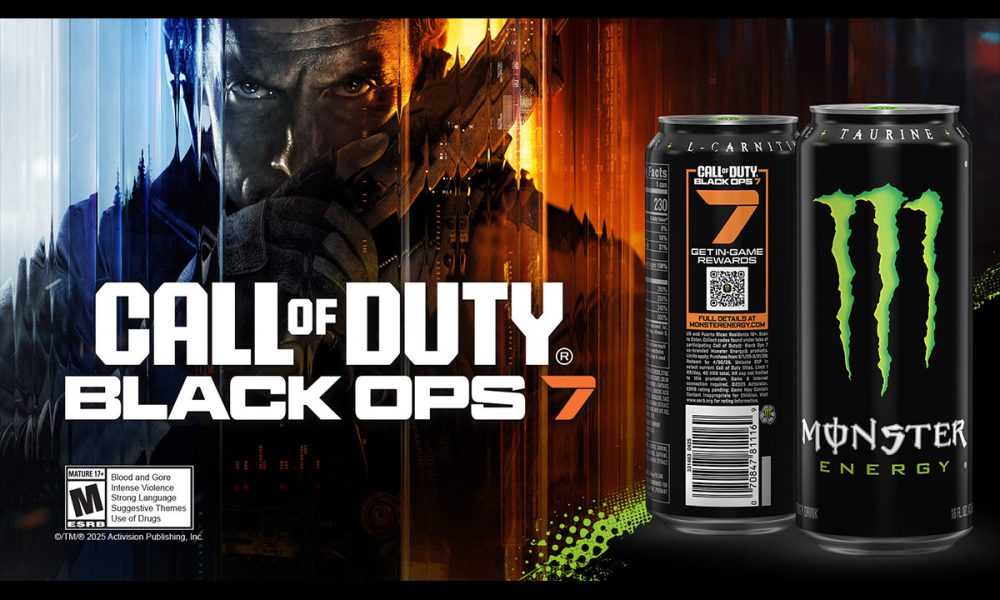gaming
How game studios can avoid common network and infrastructure issues
Mathieu Duperré, CEO and Founder of Edgegap
It’s common for video game developers to launch a day-one patch for new releases after their games have gone gold. The growing size of video games means it’s inevitable that some bugs will be missed during the QA period and go unnoticed until the game is in players’ hands.
Some of the most common issues experienced by game developers at launch are related to network and infrastructure, such as the connection issues causing chaos in Overwatch 2 and Call of Duty: Modern Warfare 2, as some players experience issues connecting to matches. And while there’s no way of eliminating lag, latency and disconnects from multiplayer games, developers can minimize the chances of them occurring and the disruption they cause by following a few simple steps.
Plan for the worst, expect the best
For many video game developers, the best-case scenario for the launch of their game – that it’s a huge hit and far more people end up playing it than they expected – can also be the worst-case scenario for infrastructure-related issues. An influx of too many players can lead to severe bottlenecking, resulting in lag and connectivity issues. In a worst-case scenario, servers become overloaded and stop responding to requests, usually leaving players unable to connect to online matchmaking.
Another worst-case scenario is planning for big numbers at launch and building the necessary infrastructure to support this, only for your game to launch and have nowhere near the traffic you were expecting. Not only is this a big problem for your bottom line, but things can get worse if you rush your search for an infrastructure provider and forget to read through the T&Cs properly.
Some infrastructure suppliers will onboard new studios on a fixed contract, not letting them scale back if they’ve overprovisioned their servers. Some infrastructure providers offer a lot of free credits, to begin with, only for those credits to expire after the first few months. Game studios then discover they’re responsible for fronting the cost of network traffic, load balancers, clusters, API calls, and many more products they had yet to consider.
With that in mind, try not to sign up for long-term agreements that don’t offer flexibility for scaling up or down. Your server setup has a lot to gain by being flexible, and your server requirements will likely change in the weeks following launch as you get a better idea of your player base; under-utilized servers are a waste of money and resources.
Test, test, and test again
You haven’t tested your online matchmaking properly if you’ve tested your servers under the strain of 1000 players, but you’re expecting 10,000 or 100,000 at launch. Your load tests are an essential part of planning for the worst-case scenario, and you should test your network under the same strain as if you suddenly experienced a burst in players.
Load testing is important because you’ll inevitably encounter infrastructure issues as your network comes under strain. Still, it’s only by facing those issues that you can identify them and plan for them accordingly once your game launches.
Similarly, you want to test your game in as many different locations as possible because there’s no way of telling where your traffic will be coming from. We’ve had cases where studios released a very popular game overnight in Chile but needed data centers. Thankfully, you can mitigate issues such as these by leveraging edge computing providers to reduce the distance between your players and the point of connection.
Consider the specific infrastructure needs of your game’s genre
Casual games with an optional multiplayer component will have a completely different network requirement to MMORPGs, with thousands of players connected to a centralized world. Similarly, a first-person-shooter with 64-player matchmaking will have a different network requirement than a side-scrolling beat ’em up or fighting game, which often requires custom netcodes due to the fast-paced nature of the combat.
People outside the video game industry assume all video games have similar payloads, but different game genres are as technically different in terms of infrastructure requirements as specific applications.
With that in mind, it’s essential for game studios, especially smaller ones, to regularly communicate with infrastructure partners and ensure they’ve got a thorough understanding of how the multiplayer components of your game will work. A decent infrastructure provider will be able to work with you to not only ensure load testing is carried out correctly but also help diagnose any broader issues.
Too many tools and not enough resources to use them
One thing that large network providers are very good at providing is tools, but these are often complex and require specific knowledge and understanding. It’s worth noting that large game studios have dedicated teams of engineers to manage these tools for AAA games with millions of players.
Smaller studios need to be realistic about the number of players they expect for new game releases and their internal resources to manage network and infrastructure-related issues and queries. You should partner with a provider that can handle all of this, so your studio can focus on making the best game possible. The more automation you can plan into your DevOps methodology, the better!
Takeaways for small game studios
While game studios likely encounter many issues as part of their game development journey, working these three pieces of advice into your DevOps pipeline is a sure way of minimizing infrastructure-related headaches.
Don’t reinvent the wheel – We’ve seen many studios trying to build bespoke systems rather than automate and use what’s already out there. If you can develop your netcode, engine and manage your Kubernetes, that’s great! But is it necessary, or is building these things from scratch just going to create trouble further down the line?
Understand your workflows – Plan for everything, use tech-agnostic vendors to remain flexible, get real-time visibility and logs for your matchmaking traffic, and have a 24/7 support plan for when your game is live. The more potential problems you’re aware of, the better.
Load testing your game – Build tiny tools and scripts to generate as much traffic as you can, breaking your system as often as possible.
ARK: Survival Ascended
Best Game Server Hosting (2025): Nitrado Ranked Top Across Leading Games by Software Experts

Software Experts has recognized Nitrado as the leading choice in its 2025 feature on the best game server hosting platforms. Nitrado was ranked highly across major titles such as Minecraft, ARK: Survival Ascended, and DayZ.
Nitrado delivers scalable and reliable server hosting solutions for a wide range of online multiplayer games. The demand for high-quality game server hosting has increased as online multiplayer games have grown in scale and complexity. Expansions, downloadable content (DLC), and frequent updates have placed pressure on server infrastructure, requiring providers to deliver stability, fast updates, and community integration. For players of ARK, Minecraft, or DayZ, server downtime can result in lost progress, interruptions to group play, and diminished gaming experiences.
This trend underscores why a strong hosting partner is essential. Servers are not only responsible for keeping games online but also for supporting the evolving needs of large player communities. Nitrado has consistently aligned its platform with these expectations, offering infrastructure that adapts to both technical requirements and user demand.
Recognition Across Key Games
Software Experts noted that Nitrado has demonstrated consistent support for popular titles through timely hosting updates and tools designed for specific gameplay environments.
Minecraft hosting: With the release of the Minecraft 1.21 Tricky Trials update, Nitrado provided immediate server support, allowing players to explore new dungeons and mechanics without interruption.
ARK hosting: Nitrado servers were prepared for the Ragnarok Map in ARK: Survival Ascended and are optimized for the upcoming Aquatica DLC, ensuring survival experiences remain stable even with expansive maps and mods.
DayZ hosting: Survival titles demand persistence and uptime. Expansions such as Frostline and the upcoming Badlands were supported rapidly on Nitrado servers, enabling players to adapt to environmental changes without server disruption.
Expansion to Broader Multiplayer Titles
The recognition also emphasized Nitrado’s versatility beyond the most popular titles. In 7 Days to Die, the recent Storms Brewing update was supported on Nitrado servers at launch, giving players stable access to new weather and survival mechanics. For Conan Exiles, the platform has offered guidance on server setups such as best base locations, combined with reliable performance during intensive multiplayer sessions. In Enshrouded, Nitrado integrated the Melodies of the Mire update directly into its hosting framework, ensuring smooth adoption of new classes and gameplay features.
By covering a range of genres, Nitrado provides infrastructure that extends beyond traditional survival titles, positioning itself as a multi-game hosting solution.
Tools and Community Integrations
Software Experts also highlighted Nitrado’s focus on server management tools and community features. The platform’s web interface and mobile applications allow administrators to adjust settings with minimal technical complexity, from rolling back Minecraft worlds to tuning difficulty levels in ARK.
Support for mods and plugins further enhances gameplay. Communities can integrate texture packs, maps, and total conversions without complicated manual setups. This has proven especially useful in titles with active modding cultures, including ARK and Minecraft.
Nitrado also integrates with platforms such as Discord, creating a unified environment where players can coordinate matches, share updates, and stay connected. These integrations have become increasingly important as multiplayer gaming extends beyond gameplay into community interaction.
Performance and Reliability
Reliability remains a core measure of success in server hosting. Software Experts reported that Nitrado’s global infrastructure of data centers reduces latency for players across regions. Built-in protections such as DDoS mitigation ensure that servers remain stable against external threats.
Performance is measured in player experiences rather than technical specifications. Large Minecraft builds, ARK raids with high player counts, or DayZ survival sessions all require servers capable of managing demand without lag or interruption. Nitrado has consistently met these requirements, providing stability for both small private groups and larger multiplayer communities.
The recognition comes at a time when server hosting has become critical to the success of modern games. The rise of live-service models, frequent DLC releases, and growing player bases has made infrastructure a competitive differentiator. Hosting platforms that can update quickly, manage new expansions, and support community tools are essential for maintaining engagement.
For players, this translates into uninterrupted sessions and reliable access to content. For developers, it ensures that game updates are supported with minimal disruption. Software Experts’ analysis noted that Nitrado’s approach positions it well within this broader industry context.
Nitrado’s recognition by Software Experts as the leader in best game server hosting reflects its consistent performance across multiple titles, timely integration of expansions and updates, and investment in tools that support both administrators and communities.
As online communities expand and games evolve, the importance of reliability, performance, and community integration will only increase. Nitrado’s ability to address these needs underscores why it was recognized as a top choice for 2025.
The post Best Game Server Hosting (2025): Nitrado Ranked Top Across Leading Games by Software Experts appeared first on Gaming and Gambling Industry in the Americas.
gaming
Valicy Gaming Launches as New Brand in Land-Based Gaming, Evolving from Grover Gaming

The former Founder and CEO of Grover Gaming has officially launched a new brand in land-based gaming. Named by combining the names of his daughters, Valicy Gaming was unveiled during a recent company launch party held in Greenville, North Carolina.
Evolving from Grover Gaming—which was recently sold to Light & Wonder for a total consideration of $1.05 billion —Valicy will now focus on becoming a major manufacturer in land-based gaming across North America. Retaining a majority of the employees from the acquisition, Valicy will continue forward with a veteran team that will have a sharper focus on game development and hardware design.
Despite the name change, Valicy continues under the same experienced executive leadership team and remains dedicated to providing best-in-class customer service and technical support—qualities customers have come to depend on. The company’s values, represented by its CARE triangle—People, Company, and Work—are deeply rooted in its culture and will remain central to its mission moving forward.
The public debut of the Valicy brand will take place at the Global Gaming Expo (G2E) in Las Vegas, October 6–9, at the Venetian Expo, Booth #1623, where the team will showcase its new identity and game offerings to casino partners and operators from across the industry.
“This is an exciting time for our teams,” said Garrett Blackwelder, Founder and CEO of Valicy. “We have the opportunity to do big things in new markets, which gives us energy and enthusiasm. As we grow Valicy, we will focus on relationships, excellence, and innovation.”
The post Valicy Gaming Launches as New Brand in Land-Based Gaming, Evolving from Grover Gaming appeared first on Gaming and Gambling Industry in the Americas.
Call of Duty
Monster Energy and Call of Duty Unite Again with Exclusive In-Game Rewards and Expanded Program Timing

Monster Energy is teaming up once again with Call of Duty to deliver bonus in-game rewards, bonus 2XP and an expanded promotional window that gives fans even more opportunities to fuel up and power their gameplay.
Gamers and Monster fans can start collecting codes to stockpile rewards ahead of the highly anticipated release of Call of Duty: Black Ops 7 on November 14. Following the record-breaking success of the last year’s program – the 2025 campaign has been extended and will run through March 31, 2026, with code redemption available until April 30, 2026.
Players who purchase specially marked Call of Duty cans of Monster Energy, Monster Zero Sugar, or Monster Zero Ultra can find a unique code under the tab and redeem it online at callofduty.monsterenergy.com. Every can unlocks bonus in-game items and double experience points.
2025 in-game rewards include:
• 1 Can = “Energy Flash” Large Decal + 15 min 2XP
• 2 Cans = “Peacekeeper MK1 – Hyper Green” Weapon Blueprint + 15 min 2XP
• 3 Cans = “Green Fury” Operator Skin + 15 min 2XP
• 4 Cans = “VS Recon – Green Thunder” Weapon Blueprint + 15 min 2XP
• 5 Cans = “Daylight Ripper” Operator Skin Recolor + 15 min 2XP
In addition, select retailers will feature specialty bonus in-game content such as Emblems, Charms, Weapon Stickers, and Dual 2XP.
And as an added bonus, fans who create an account on callofduty.monsterenergy.com before October 31 will score a Black Ops 6 in-game skin – no purchase required.
“Monster Energy is built on fueling competitive spirit and our collaboration with Call of Duty continues to push that to new levels. With expanded timing, bonus rewards and the unmatched value of Double XP in every can, this year’s program is our biggest and most exciting yet,” said Dan McHugh, Global Chief Marketing Officer at Monster Energy.
“We’re proud to continue building on the success of our partnership with Monster Energy. Monster is the go-to fuel of gamers and they are going to drink up these exciting in-game rewards,” added Cody Neal, Associate Director of Global Partnerships, Call of Duty.
The limited-edition Monster Energy Call of Duty cans are available in 16oz in Original Monster Energy, Monster Zero Sugar and Monster Zero Ultra. Special 4, 12, and 15 can Monster Energy Call of Duty multipacks are on shelves now.
The post Monster Energy and Call of Duty Unite Again with Exclusive In-Game Rewards and Expanded Program Timing appeared first on Gaming and Gambling Industry in the Americas.
-

 gaming3 years ago
gaming3 years agoODIN by 4Players: Immersive, state-of-the-art in-game audio launches into the next generation of gaming
-
EEG iGaming Directory9 years ago
iSoftBet continues to grow with new release Forest Mania
-
News8 years ago
Softbroke collaborates with Asia Live Tech for the expansion of the service line in the igaming market
-
News7 years ago
Super Bowl LIII: NFL Fans Can Bet on the #1 Sportsbook Review Site Betting-Super-Bowl.com, Providing Free Unbiased and Trusted News, Picks and Predictions
-
iGaming Industry8 years ago
Rick Meitzler appointed to the Indian Gaming Magazine Advisory Board for 2018
-
News7 years ago
REVEALED: Top eSports players set to earn $3.2 million in 2019
-
iGaming Industry8 years ago
French Senator raises Loot Boxes to France’s Gambling Regulator
-
News7 years ago
Exclusive Interview with Miklos Handa (Founder of the email marketing solutions, “MailMike.net”), speaker at Vienna International Gaming Expo 2018









